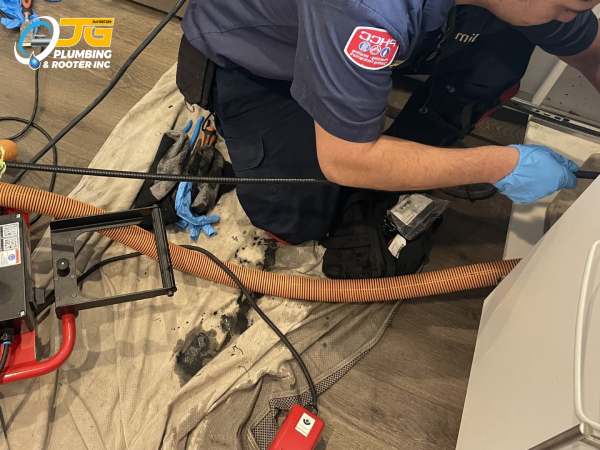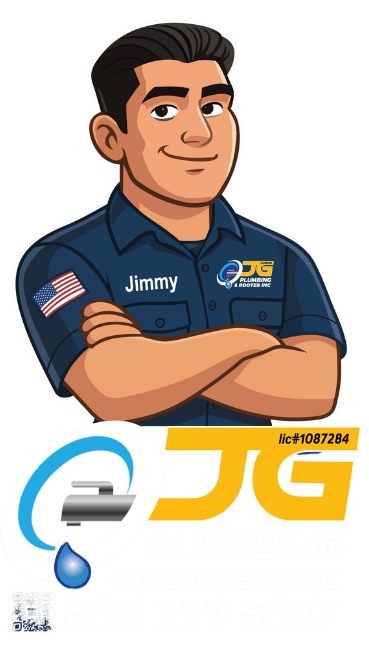Plumbing issues often go unnoticed until they cause significant damage. It’s easy to overlook the signs of plumbing problems until it’s too late. A small leak, a slow drain, or strange sounds from your pipes might seem minor, but they can be symptoms of a much bigger issue. In this article, we’ll discuss five common signs that your plumbing system may be putting your home at risk and why you should address them before they escalate.
1. Persistent Leaks and Drips
A single dripping faucet or a small leak under the sink may not seem like a big deal, but they can lead to significant problems over time. Even a slow, steady drip can waste hundreds of gallons of water, leading to increased utility bills. More importantly, persistent leaks can create an environment for mold growth and wood rot, weakening the structural integrity of your home.
If you notice any leaking faucets, pipes, or toilets, it’s crucial to address the problem right away. Even small leaks can cause long-term damage, and many leaks aren’t always visible to the naked eye. Sometimes leaks can occur inside walls or ceilings, making it hard to detect until substantial damage has already occurred. Calling a plumber San Dimas CA early can prevent these issues from escalating.
2. Low Water Pressure
Low water pressure is often a sign that something is wrong with your plumbing system. While it may seem like a minor inconvenience, it can indicate a number of potential issues, such as:
- Clogged Pipes: Over time, mineral deposits or debris can build up in your pipes, restricting water flow and causing low pressure.
- Leaking Pipes: If a pipe is leaking, it can reduce the amount of water flowing to other parts of your home.
- Broken Water Line: A serious issue such as a ruptured water line can cause significant water pressure drops throughout your home.
Low water pressure can also point to more severe problems, like corroded or damaged pipes, which need immediate attention. San Dimas plumbers are experienced in diagnosing and resolving these issues efficiently.
3. Clogged Drains and Sewage Backups
Slow drains or recurring clogs are clear indicators that something is wrong with your plumbing. While it’s common to experience a clogged sink now and then, frequent clogs are a sign of a deeper problem. These issues can be caused by:
- Tree Root Intrusion: Roots can infiltrate pipes through cracks or joints, blocking the flow of water.
- Accumulated Grease or Debris: Over time, grease, hair, soap, and food particles can accumulate inside your pipes, leading to blockages.
- Aging Pipes: Older plumbing systems may develop cracks, causing water to leak or flow slowly, leading to repeated clogs.
In some cases, clogged drains or toilets can lead to a sewage backup. This situation is not only unpleasant but also a serious health hazard. If left unchecked, backed-up sewage can flood your home, creating a costly and dangerous situation. It’s best to call a trusted plumber San Dimas before the damage becomes unmanageable.

4. Unpleasant Odors
Foul odors coming from your drains or pipes are often one of the first signs of plumbing problems. The smell of sewage or rotting food is a red flag that needs immediate attention. These odors can be caused by:
- Clogged Drains: When food particles, grease, or debris build up in your pipes, they can begin to rot, producing unpleasant smells.
- Dry P-Traps: The P-trap is a curved section of pipe under your sinks and drains that holds water to prevent sewer gases from entering your home. If the water in the P-trap evaporates, the seal is broken, allowing foul odors to escape.
- Sewer Line Problems: A break in your sewer line can allow waste and bacteria to leak into your home, creating a horrible smell and posing a serious health risk.
Ignoring unpleasant smells can lead to bigger problems, including compromised indoor air quality and potential health risks. Reach out to a plumber near me who can perform a thorough inspection and resolve the root of the issue.
5. Strange Noises from Pipes
Hearing strange noises coming from your pipes may seem harmless, but it can actually indicate a serious plumbing issue. Common noises like banging, gurgling, or whistling can be a result of:
- Air Trapped in Pipes: Air bubbles that get trapped in your plumbing can cause a “banging” sound when water is turned on. This may be a sign that your pipes are improperly vented.
- Water Hammer: Water hammer occurs when a faucet or valve is suddenly turned off, causing the water inside the pipes to slam into a closed valve. This can cause damage to your pipes over time if not addressed.
- Clogs in the Vent System: A blocked vent pipe can cause gurgling sounds as air tries to escape through the drainage system. This can lead to improper drainage and eventual clogs.
- Loose or Worn-Out Pipes: If your pipes are not properly secured, they can move or vibrate when water is flowing, causing a rattling sound.
Strange noises should never be ignored, as they can often signal that your plumbing system needs attention. Over time, these issues can lead to more significant damage if not addressed promptly by professionals offering expert plumbing services in your area.
To sum up: How JG Plumbing & Rooter Can Help
Your plumbing system plays a crucial role in keeping your home safe and functioning properly. If you’re noticing any of the signs mentioned above, it’s important to act quickly to prevent further damage. JG Plumbing & Rooter, we are dedicated to providing high-quality plumbing services to homeowners in San Dimas, CA, and the surrounding areas. Our expert team can identify and address any plumbing issues you may be facing, ensuring your home stays safe and functional.
If you’re concerned about your plumbing, don’t wait until it’s too late. Visit our website at JG Plumbing & Rooter to learn more about our services or contact us today to schedule an inspection or repair. We’re here to help keep your home safe, comfortable, and free from plumbing risks.




